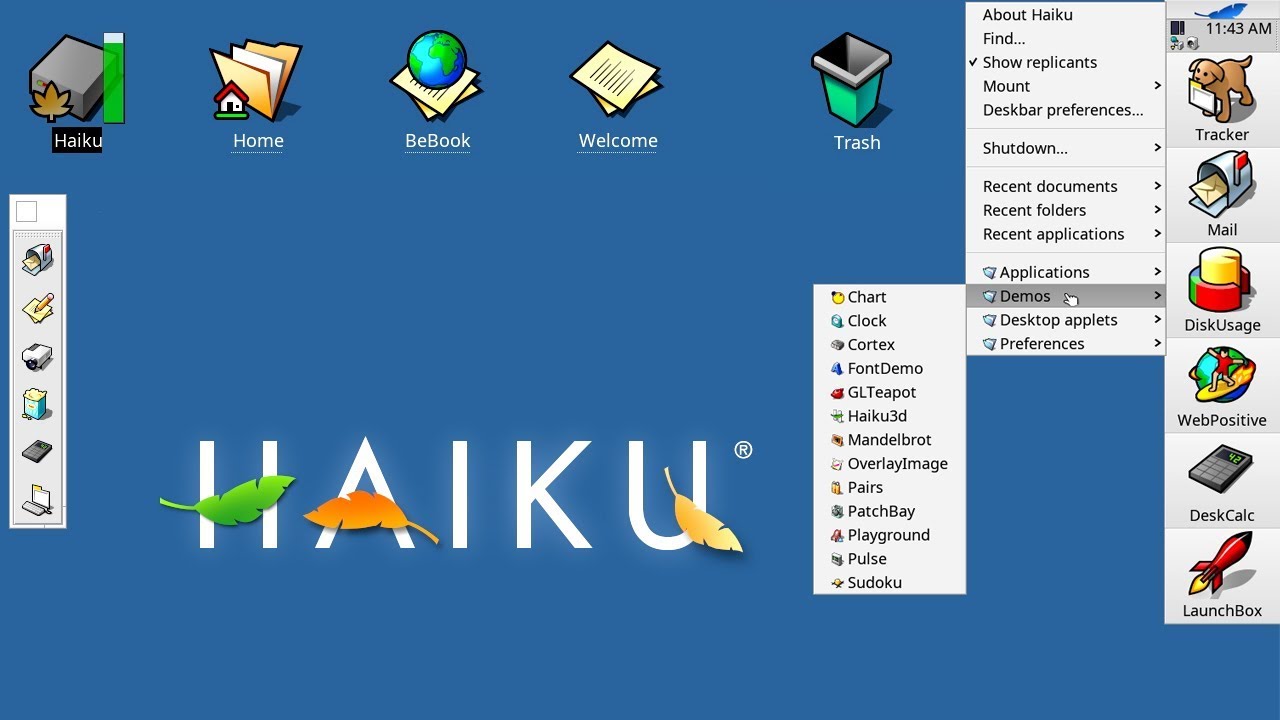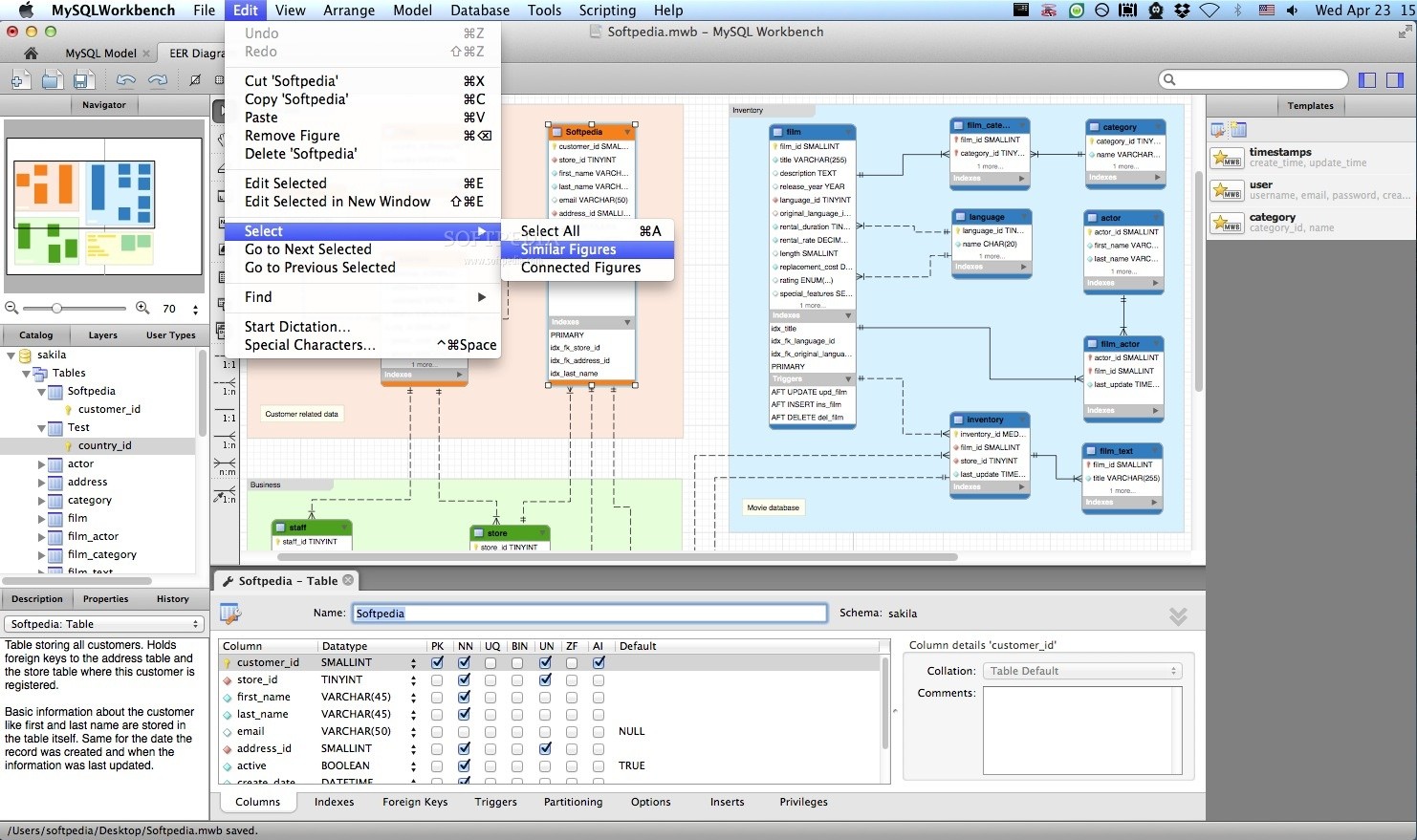# Unveiling the Rise and Fall of BeOS: A Tech Tale of Innovation and Obsolescence
BeOS emerged in the mid-1990s as a revolutionary operating system that promised to redefine personal computing with unprecedented multimedia capabilities and elegant design.
The story of BeOS represents one of technology’s most fascinating narratives—a tale of brilliant engineering, ambitious vision, and ultimately, the harsh realities of market competition. This operating system, which once seemed poised to challenge Microsoft and Apple’s dominance, has become a legendary example of how innovation alone doesn’t guarantee success in the cutthroat world of technology.
Understanding BeOS’s journey offers valuable lessons about the tech industry, market timing, and the complex interplay between technical excellence and commercial viability. For developers, tech historians, and computing enthusiasts, BeOS remains a touchstone for what might have been—a reminder that sometimes the best technology doesn’t win.
🎯 The Genesis of a Revolutionary Operating System
BeOS was born from the vision of Jean-Louis Gassée, a former Apple executive who had overseen the development of the Macintosh product line. After leaving Apple in 1990, Gassée founded Be Inc. with the ambitious goal of creating an operating system specifically designed for the multimedia-intensive computing needs of the future.
The initial development began in 1991, when the computing landscape looked dramatically different from today. Windows 3.1 dominated the PC market, while Apple struggled with its aging System 7. Gassée recognized an opportunity: existing operating systems were built on architectures designed in the 1970s and 1980s, ill-equipped to handle the demands of digital media, multitasking, and internet connectivity that were becoming increasingly important.
Be Inc. initially planned to build both the hardware and software, creating the BeBox computer. This dual approach reflected Gassée’s Apple experience, where tight integration between hardware and software created superior user experiences. The BeBox, unveiled in 1995, was a distinctive machine featuring two processors, multiple audio and video ports, and unique “Geek Port” connectors—a testament to Be’s commitment to multimedia performance.
💡 Technical Brilliance: What Made BeOS Special
BeOS wasn’t just another operating system—it represented a fundamentally different approach to computer architecture. Its technical innovations were remarkable, particularly for the mid-1990s when it emerged.
Pervasive Multithreading and Multiprocessing
BeOS was designed from the ground up for symmetric multiprocessing, allowing it to efficiently utilize multiple processors long before multi-core systems became standard. The operating system implemented pervasive multithreading, meaning that nearly every component could operate independently without blocking other processes. This architecture enabled smooth performance even under heavy workloads, something contemporary systems struggled to achieve.
Media professionals particularly appreciated this capability. BeOS could handle multiple high-definition video streams simultaneously without dropping frames—a feat that seemed almost magical compared to Windows and Mac OS of the era, which would often stutter and freeze under similar demands.
The BFS File System Innovation
The Be File System (BFS) introduced advanced features that wouldn’t become mainstream for years. It supported 64-bit addressing, metadata attributes, and database-like querying capabilities. Users could search files based on any attribute, not just filenames, making file organization intuitive and powerful. BFS also implemented journaling to prevent data corruption—a feature that wouldn’t appear in Mac OS until much later.
Responsive User Interface Design
BeOS featured a clean, intuitive interface that felt remarkably modern. The system remained responsive even during intensive operations because the user interface ran in its own protected threads. Application crashes didn’t affect system stability—a revolutionary concept when Windows 95 and Mac OS frequently experienced system-wide failures from single application problems.
The operating system’s modest hardware requirements were equally impressive. BeOS delivered exceptional performance on hardware that struggled to run Windows 98 adequately, making it attractive to users with older computers seeking better multimedia capabilities.
📈 The Peak: BeOS Gains Recognition and Momentum
By 1996-1997, BeOS had generated significant buzz in tech circles. The operating system’s demonstration capabilities were stunning—showing multiple video streams playing simultaneously while performing other tasks created memorable impressions at trade shows and technology conferences.
Be Inc. made the strategic decision to abandon hardware manufacturing and focus exclusively on software development. BeOS Release 3, launched in 1998, supported standard x86 hardware, dramatically expanding its potential user base. This version could run on PowerPC Macs as well, positioning BeOS as a versatile alternative operating system.
The developer community responded enthusiastically. Programmers appreciated BeOS’s clean C++ API, comprehensive documentation, and the responsive development environment. Applications appeared rapidly: media players, audio editors, graphics tools, and productivity software demonstrated the platform’s capabilities.
Technology publications praised BeOS extensively. Reviews highlighted its superior multimedia performance, stability, and elegant design. Many tech journalists predicted that BeOS could capture significant market share, particularly among creative professionals frustrated with existing platforms’ limitations.
🎭 The Missed Opportunities: Apple’s Rejection
The most pivotal moment in BeOS history came in 1996 when Apple began searching for a next-generation operating system. Apple’s own efforts to modernize Mac OS had failed repeatedly, and the company needed a solution urgently. Be Inc. entered negotiations to sell BeOS to Apple, seemingly the perfect match given Gassée’s Apple background and BeOS’s technical superiority.
However, negotiations collapsed spectacularly over pricing. Gassée reportedly demanded $200-300 million, a figure Apple considered excessive. The relationship soured, and Apple ultimately purchased NeXT instead for $429 million, bringing Steve Jobs back to the company. NeXT’s technology became the foundation for Mac OS X, which eventually evolved into today’s macOS.
This rejection represented a critical turning point. Had Apple acquired BeOS, computing history might have taken a dramatically different path. BeOS could have reached millions of users instantly, ensuring its survival and continued development. Instead, Be Inc. needed to find alternative strategies for market entry.
⚔️ Fighting Giants: The Impossible Battle
Without Apple’s resources and established user base, Be Inc. faced the monumental challenge of competing against Microsoft and Apple independently. The company attempted several strategies to gain market traction, each facing significant obstacles.
The OEM Strategy That Failed
Be Inc. approached computer manufacturers about pre-installing BeOS alongside Windows, offering consumers dual-boot options. This strategy seemed logical—users could try BeOS without abandoning Windows entirely. However, Microsoft’s licensing agreements with OEMs essentially prohibited this approach. Manufacturers who installed competing operating systems risked losing favorable Windows pricing, making the proposition economically unviable.
This anti-competitive behavior later became central to the United States v. Microsoft antitrust case. Be Inc. itself filed a lawsuit against Microsoft in 2002, claiming anti-competitive practices had destroyed BeOS’s market opportunities. The lawsuit eventually settled for $23.25 million, but this vindication came far too late to save the operating system.
The Internet Appliance Pivot
As desktop market penetration proved elusive, Be Inc. pivoted toward internet appliances—dedicated devices for web browsing and media consumption. The company released BeIA (BeOS Internet Appliance) targeting this emerging market. Several manufacturers partnered with Be to create devices running BeIA, including Sony’s eVilla internet appliance.
Unfortunately, the internet appliance market never materialized as predicted. These devices proved too limited for serious computing yet too expensive compared to entry-level PCs. Products flopped commercially, and this strategy failed to provide the revenue stream Be Inc. desperately needed.
💔 The Final Chapter: Dissolution and Legacy
By 2001, Be Inc.’s financial situation had become untenable. The company had burned through its funding without achieving commercial viability. In August 2001, Palm Inc. acquired Be Inc.’s intellectual property for just $11 million—a fraction of what Apple had refused to pay five years earlier.
Palm intended to use BeOS technology in their mobile devices, but this plan never fully materialized. BeOS technology influenced PalmOS development, but the operating system itself effectively ceased to exist as a distinct platform.
For BeOS users and the passionate community that had formed around the platform, this acquisition marked a devastating end. The operating system they had championed, which had demonstrated such promise and technical excellence, would no longer receive development or support.
🌱 The Afterlife: Haiku and the Open Source Revival
Though BeOS commercially died, its spirit survived through an ambitious open-source project called Haiku. Launched in 2001, Haiku aimed to recreate BeOS as an open-source operating system, maintaining binary compatibility with original BeOS software while continuing development.
Haiku’s development has been remarkably persistent despite limited resources. The project has attracted dedicated developers committed to preserving BeOS’s philosophy and design principles. After years of development, Haiku released its first beta in 2018, demonstrating that a small but passionate community could sustain BeOS’s vision.
While Haiku remains a niche platform, it serves as a living testament to BeOS’s influence. The operating system continues to attract users who appreciate its clean design, efficiency, and unique approach to personal computing. Haiku proves that innovative ideas in software don’t truly die—they evolve and persist through community dedication.
🎓 Lessons from BeOS: Innovation Versus Market Reality
The BeOS story offers multiple valuable lessons for technology entrepreneurs, developers, and industry observers. These insights remain relevant decades after BeOS’s commercial failure.
Technical Excellence Isn’t Enough
BeOS demonstrated that superior technology doesn’t guarantee market success. Despite being technically advanced compared to Windows and Mac OS, BeOS couldn’t overcome network effects, established ecosystems, and anti-competitive practices. Market dominance, user inertia, and application availability often matter more than technical merit.
Timing and Resources Matter Critically
Be Inc. attempted to build an operating system ecosystem with limited resources against entrenched competitors with billions in capital. The company arrived too late to capture the desktop market but too early for mobile computing. This timing mismatch, combined with insufficient resources to sustain prolonged market development, proved fatal.
Platform Wars Require Ecosystem Thinking
Operating systems don’t succeed in isolation—they require applications, developer support, hardware partnerships, and user communities. BeOS attracted enthusiastic developers but never achieved the critical mass necessary for self-sustaining growth. Without thousands of applications, mainstream users had insufficient reason to abandon Windows or Mac OS despite BeOS’s technical advantages.
🔮 Alternative Histories: What If BeOS Had Succeeded?
Speculation about BeOS’s potential impact remains fascinating. Had Apple purchased BeOS or had Be Inc. secured OEM partnerships, computing might look considerably different today.
BeOS’s multimedia architecture and efficient design could have accelerated the development of content creation tools, potentially shifting creative industries toward different workflows. Its multiprocessing capabilities might have influenced how applications were designed, pushing parallel computing into mainstream consciousness earlier.
Perhaps most intriguingly, BeOS’s modular architecture and efficiency could have influenced mobile operating system development. Had BeOS evolved rather than disappeared, it might have competed in the smartphone era, potentially altering the iOS-Android duopoly that dominates mobile computing today.
🌟 Cultural Impact and Continuing Influence
Despite commercial failure, BeOS influenced subsequent operating system development in subtle but significant ways. Developers who worked on BeOS carried their experiences to other projects, spreading ideas about threading, file systems, and user interface design.
Modern operating systems incorporate concepts that BeOS pioneered or refined. Pervasive multithreading, journaling file systems, and responsive UI design are now standard expectations, partly because systems like BeOS demonstrated their value. While direct attribution is difficult, BeOS contributed to the collective understanding of what modern operating systems should provide.
For the technology community, BeOS remains a beloved “what if” story—a reminder that innovation happens in unexpected places and that sometimes the most promising technologies face insurmountable market obstacles. Tech enthusiasts still discuss BeOS with reverence, keeping its memory alive through articles, videos, and continued Haiku development.
💭 The Enduring Fascination with BeOS
Why does BeOS continue to fascinate people decades after its commercial demise? The answer lies partly in nostalgia, but more fundamentally in what BeOS represented: a bold vision executed with technical excellence, ultimately defeated by market forces rather than engineering inadequacy.
BeOS embodies the romantic notion of the underdog creating something genuinely better, only to be crushed by entrenched interests. This narrative resonates because it reflects broader concerns about innovation, competition, and whether markets truly reward the best solutions.
For computing historians, BeOS provides insights into the 1990s technology landscape—a period of rapid change, competing visions for computing’s future, and the consolidation that eventually produced today’s platform duopolies. Understanding BeOS helps contextualize how we arrived at our current computing environment.
The operating system also serves as inspiration for current developers working on alternative platforms. BeOS proved that small teams can create sophisticated, innovative systems. While commercial success proved elusive, the technical achievement itself remains impressive and instructive.
As technology continues evolving, BeOS’s story reminds us that innovation requires not just brilliant engineering but also favorable market conditions, adequate resources, strategic partnerships, and sometimes, luck. The rise and fall of BeOS represents more than one company’s trajectory—it encapsulates the challenges and uncertainties inherent in technology innovation itself, making it a tale worth remembering and studying for anyone interested in computing’s past, present, and future. 🚀
Toni Santos is a visual historian and creative artisan whose work channels the bold spirit of the steam-powered era—a time when imagination, mechanics, and ambition converged to reshape the modern world. Through richly detailed visual narratives and handcrafted design, Toni celebrates the legacy of steam innovation as both an artistic and technological revolution.
Driven by a passion for mechanical aesthetics, forgotten inventions, and industrial-age ingenuity, Toni reimagines the world of steam through illustrations, tactile artifacts, and storytelling that capture the poetry of pressure, motion, and invention. From piston-driven engines to brass-detailed diagrams, each piece reveals how steam wasn’t just power—it was promise.
With a background in visual design and historical research, Toni brings a craftsman’s eye and a dreamer’s heart to the stories of tinkerers, inventors, and visionaries who shaped the 19th century. His work doesn’t merely document machines—it honors the culture, courage, and creativity that drove a world to reimagine itself through gears, valves, and vapor.
As the creative voice behind Vizovex, Toni shares curated articles, reconstructed blueprints, and visual interpretations that bring this industrial past to life. His collections serve as a tribute to:
The elegance of steam-era design and innovation
The human stories behind great mechanical feats
The aesthetic beauty found in function and form
The echo of invention in today’s creative world
Whether you’re a history lover, a fan of steampunk, or an admirer of antique technology, Toni welcomes you into a world where art and machinery fuse, one cog, one drawing, one rediscovered marvel at a time.





